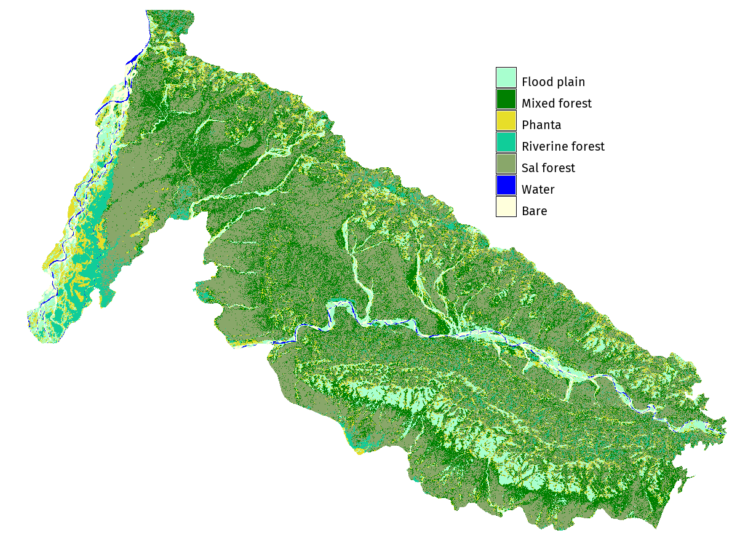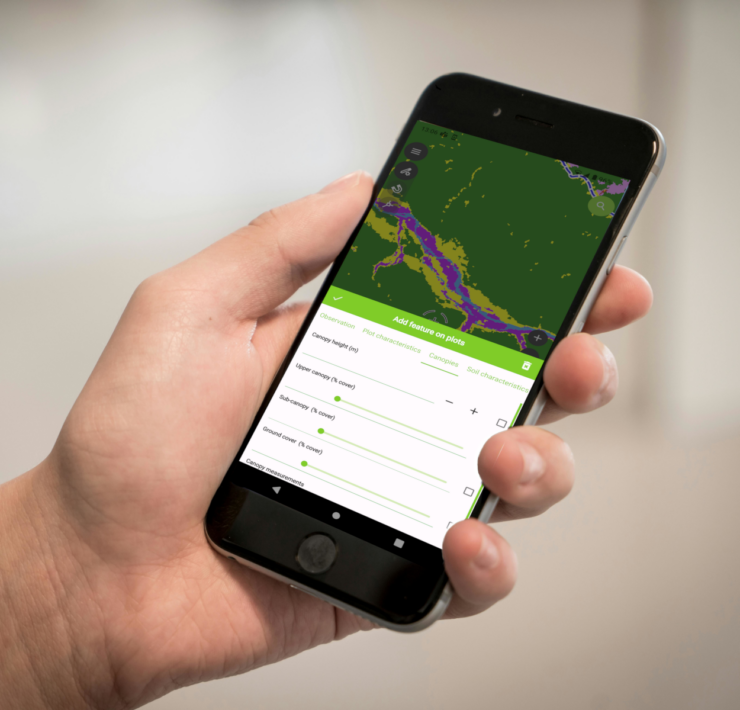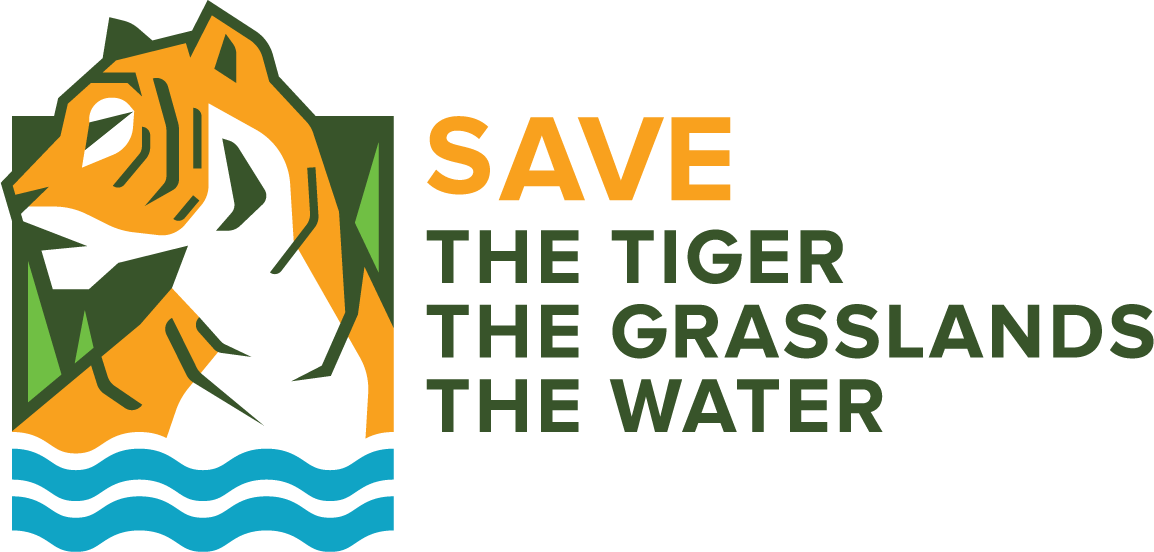Variability in ecohydrological boundary conditions for grasslands in TAL nature reserves (WP9)
The Terai Arc Landscape (TAL) stretches across Nepal and India, featuring diverse subtropical forests and grasslands that host rich biodiversity. Understanding the spatial distribution and dynamics of this natural vegetation is essential for effective conservation and sustainable management. A key challenge is scaling insights from local studies to a regional context. To address this, researchers from HAS Green Academy are working to map the ecohydrological boundary conditions across the TAL landscape, with a focus on natural vegetation.

Figure-1 The lowlands of the Terai Arc Landscape (TAL) with the protected areas (dark green). In red the surveyed areas, from west to east: NP Shuklapanta, NP Bardia and NP Chitwan.
Between 2023 and 2024, students from the HAS Green Academy surveyed nearly 200 plots in three national parks—Shuklaphanta, Bardiya, and Chitwan—recording species compositions and measuring key features like tree height, canopy cover, and the density of understory plants. Multivariate analyses, using clustering and ordination methods, were carried out to identify and classify vegetation types and to examine the relationships between floristic composition and structural characteristics.Results revealed distinct types of forests and grasslands, though with considerable overlap in characteristic species. This overlap, particularly notable in grasslands and forest understory, suggest that there is a complex interplay between natural processes and human influences such as controlled burning.


We combined field observations with satellite imagery and ensemble modeling to create vegetation maps covering the three surveyed parks. High-resolution satellite imagery, such as from Sentinel-2, provided detailed spatial and temporal coverage, while ensembly modelling, which combines predictions from multiple algorithms (e.g., Random Forest, Gradient Boosting, and Support Vector Machines), provided a robust framework for classification. While this approach proved successful in well-studied areas like western Bardiya, applying it to other regions remains challenging. Our current work focuses on improving these models by incorporating structural features of the vegetation. This approach shows promise for forests, where characteristics like tree height strongly relate to species composition. However, grassland patterns have proven more complex, with both species composition and structural characteristics varying over relatively short distances. This raises critical questions about the drivers of variability: is it small-scale soil and hydrological conditions, or are human activities like fire the primary influence?

Looking ahead, our students will conduct fieldwork from February to May 2025 in less-studied areas of the aforementioned parks and their buffer zones. This data will support our ongoing development of maps characterizing key habitats using remote sensing and machine learning techniques that can track and predict changes over time. This includes the testing of the application of Planet’s high-resolution remote sensing-based planetary variables data products, such as biomass and soil moisture, to enhance the accuracy of habitat maps and detect fine-scale changes in vegetation structure.

WP9 team will keep close work with other working packages to integrate the findings on regional ecohydrological patterns with locally obtained data on ecohydrological dynamics, habitat quality, and wildlife distribution. This integrated approach aims to provide critical knowledge to inform conservation planning and sustainable land use decisions across the TAL region.

